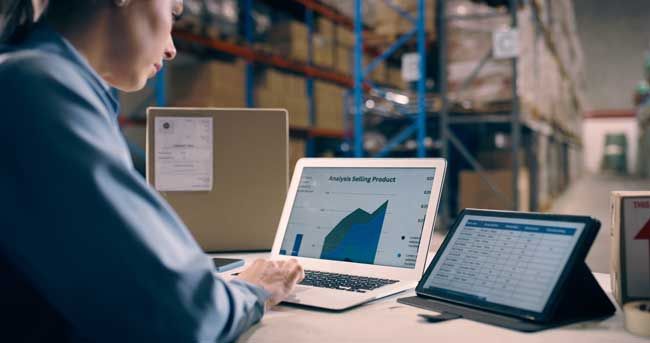
Fleet cards are essential tools for businesses managing a fleet of vehicles. From reducing costs to improving operational efficiency, fleet fuel cards are designed to simplify fleet management through valuable financial and management features.
Unlike regular credit cards, fleet cards are engineered specifically to manage expenses related to company vehicles.
These relatively simple tools offer more than an easy payment solution; fleet cards give businesses enhanced control over spending and valuable insights into fuel usage. Let’s look at the various advantages fleet cards offer and how managers and business owners can maximize each.
Advantages of Fleet Cards
Unlike regular credit cards, fleet cards are engineered specifically to manage expenses related to company vehicles. With options like the CITGO Fleet Card, businesses have complete control over fuel transactions. These cards give you the means to limit unauthorized spending, reduce fuel costs, increase the efficiency of expense management and so much more. It’s a simple yet powerful idea: by framing your expenses within a controlled system, you can set clear boundaries and make your financial management much more straightforward.
Let’s dive into seven key benefits of fleet fuel cards.
1. Cost Savings and Discounts
One of the most popular features of fleet cards is the rebates they offer. CITGO, for instance, often offers users up to 7¢ per gallon rebates, which can lead to substantial cost savings. In addition to fuel rebates, many fleet cards include discounts on fleet-related purchases such as auto parts, service, hotels and more.
Maximization tip: Consolidate fleet part purchases and services to providers where discounts are available. Analyze your fleet’s fuel usage and align roles and fill-ups with in-network stations to increase fuel savings and boost cash flow.
2. Efficient Expense Management
Managing expenses can feel overwhelming, but fleet cards change the story. Fleet cards constantly work behind the scenes, tracking and managing every penny spent on fuel and maintenance.
Every transaction is recorded in real-time, and the details are housed in a fleet card dashboard. Recorded purchase information includes:
- Timestamp of purchase
- Driver ID
- Vehicle ID
- Odometer reading
- Amount of fuel purchased
- Cost of the transaction
- Fuel type: diesel vs. gas
- Fuel grade: regular vs. premium
Maximization tip: Utilize the fleet card dashboard. This tool helps businesses monitor spending trends and manage budgets in real time. With up-to-date information, managers can address concerns and make adjustments in the moment instead of waiting for outdated information, as is the case with credit cards.
While fleet cards are primarily used for fuel purchases, many also cover other expenses, such as vehicle maintenance, repairs and tolls. This versatility makes fleet cards a convenient option for managing various fleet-related costs.
3. Automated Fuel Expense Tracking and Reporting
Tracking fuel usage manually is time-consuming and prone to inaccuracies. Fleet cards automatically record fuel transactions, helping ensure accurate data collection. This data replaces fuel expense reports, which generally include all the information about a driver and their vehicle. All the information a driver typically includes in such reports is collected at the point-of-sale.
Maximization tip: Using the real-time data collected by a fleet card, a fleet manager eliminates the need to collect receipts and complete expense reports. Additionally, accounting departments are freed up to focus on budgeting, forecasting and other financially crucial tasks.
4. Control Over Spending
Central to effective budget management is the ability to set clear parameters for employee spending.
Fleet cards are equipped with purchase limits. This feature allows businesses to set parameters around spending. Such control over fleet expenses helps companies avoid overspending. A fleet manager can easily program a card to be active at certain times of the day or days of the week. They can even limit the number of transactions, the amount of fuel that can be purchased, or the total dollar amount per transaction.
Maximization tip: Ensure purchase limits align with fuel spending policies. This sets a clear expectation for drivers and reduces the likelihood of misuse. Review and adjust these limits regularly as your fleet size, operational requirements or policies change.
5. Integration with Accounting Software
Most fleet card dashboards integrate with existing bookkeeping software. This means you have instant access to accurate records that reflect real-time transactions related to fleet use. This elevates financial oversight by streamlining the record-keeping processes and enabling faster closing periods at month-end.
Maximization tip: Integrating your fleet card transactions with your accounting system saves time, improves accuracy and ensures financial records are always current.
6. Comprehensive Reporting

Fleet cards like those offered by CITGO include comprehensive and customizable reporting features. These reports provide detailed insights into fuel usage, maintenance costs and other fleet-related expenses, enabling businesses to make data-driven decisions.
While a fleet card includes many standard reports that outline vehicle usage, fuel usage, overspending and more, you can also create custom reports. These may be vehicle-specific, driver-specific or hone in on a particular metric. The ability to create customized reports means you always have insight into the KPIs that are important to your specific business.
Maximization tip: Leverage the reporting tools provided by your fleet card provider to identify areas for improvement. For instance, you might notice specific routes are more fuel-intensive, prompting you to optimize delivery schedules or explore alternative routes.
7. Versatile Usage
While fleet cards are primarily used for fuel purchases, many also cover other expenses, such as vehicle maintenance, repairs and tolls. This versatility makes fleet cards a convenient option for managing various fleet-related costs. The CITGO Universal Card, for instance, is accepted at all major U.S. fuel stations and 42,000 service centers nationwide. These cards provide businesses with flexibility for maintaining their fleet. Whether dealing with routine inspections or sudden breakdowns that require immediate attention, having an accessible payment method significantly eases stress.
Maximization tip: Explore all the services your fleet card covers and utilize them to their full potential. For example, if your card offers discounts on maintenance services, prioritize using approved service centers to maximize savings.
Fleet Cards are the Perfect Tool for Fleet Management
Fleet cards are perfect for any business aiming to improve fleet operations and reduce costs. Companies can achieve greater financial efficiency and operational control by understanding the advantages of a fleet fuel card and implementing strategies to maximize the benefits.
From cost savings and automated fuel tracking to comprehensive reporting and budget control, fleet cards empower businesses to streamline their fleet management processes effectively. Take the time to assess your fleet’s unique needs, select the right fleet card provider and leverage the card’s features to unlock its full potential.